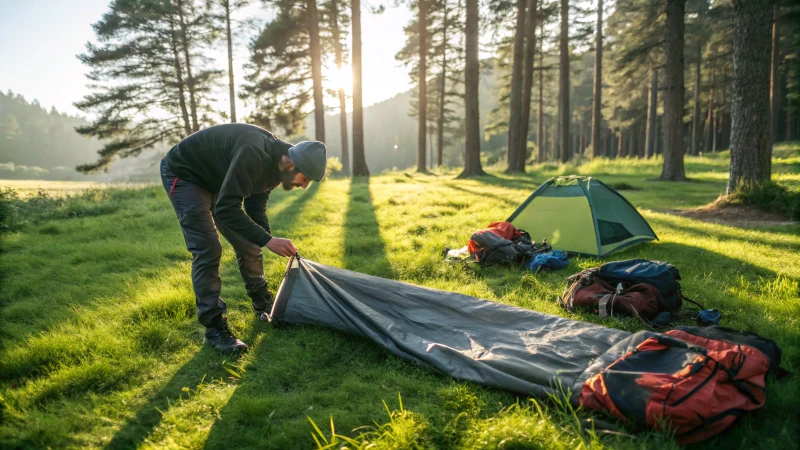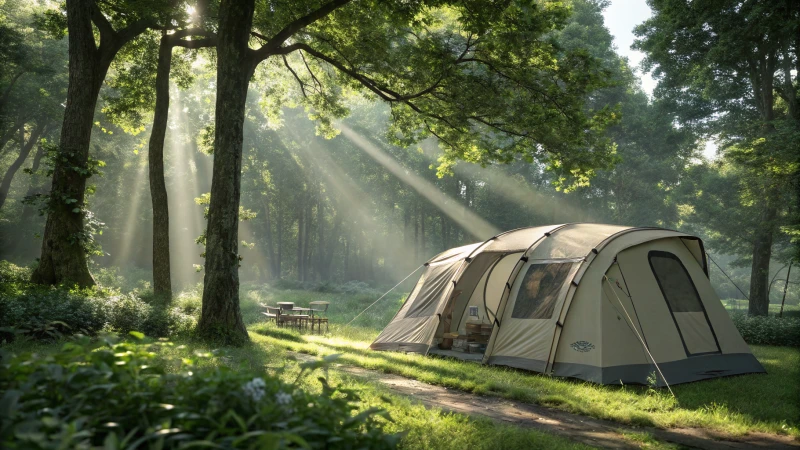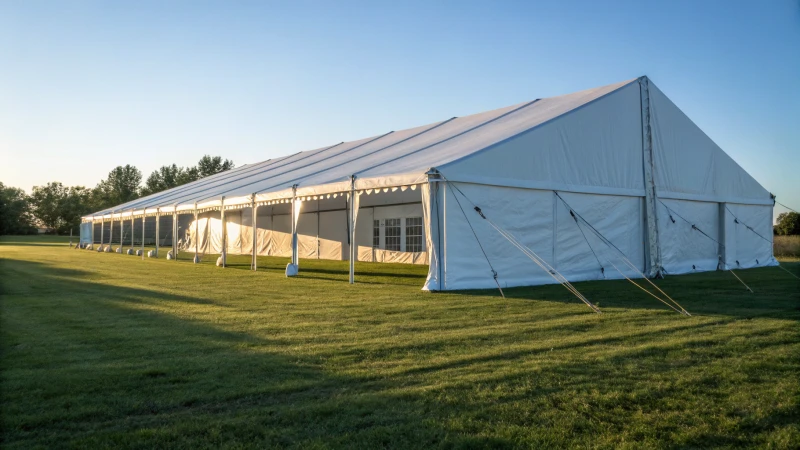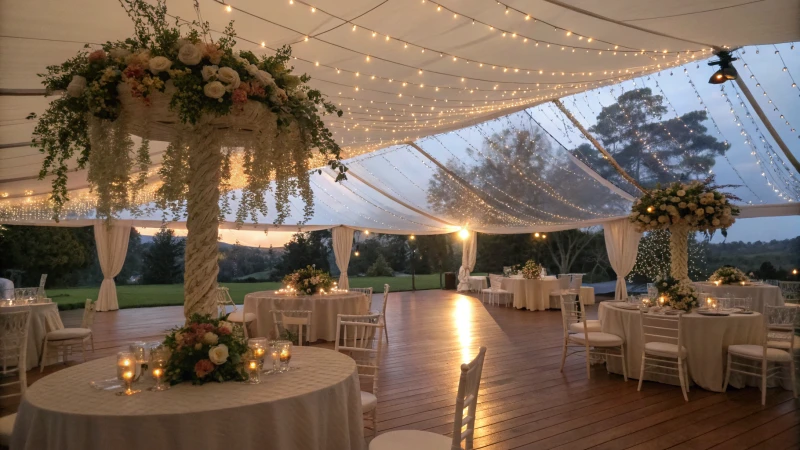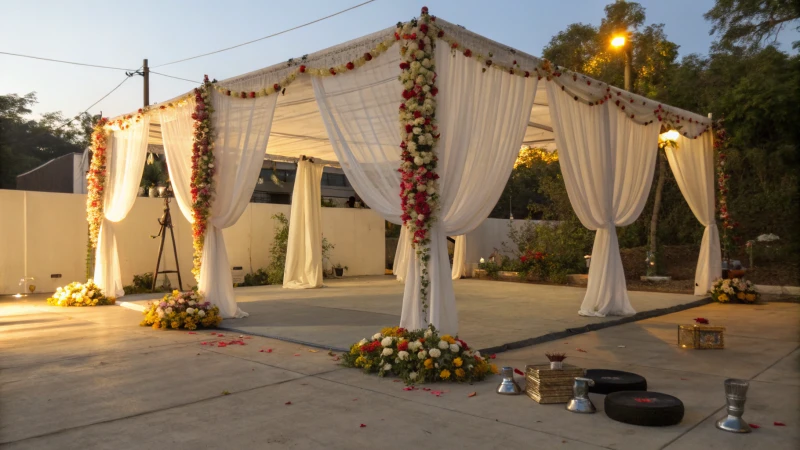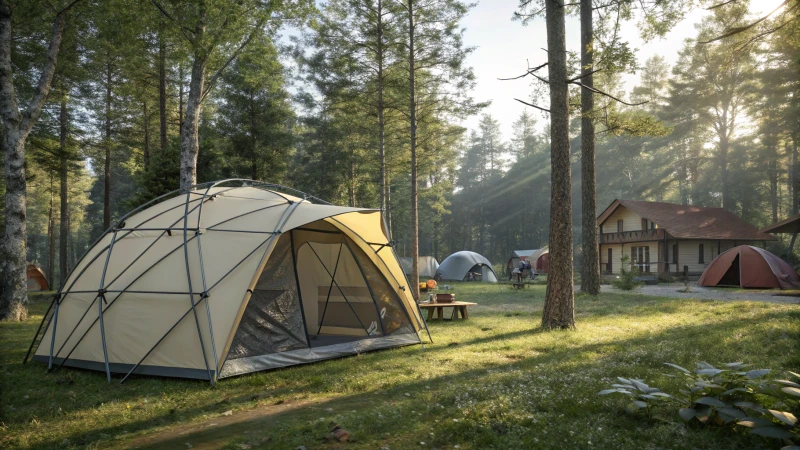
Picking the perfect tent can transform a camping trip from a hassle into an adventure. So, how do you choose the right one?
Dome tents stand out because of their curved design with intersecting poles, offering great stability, portability, and quick setup. They’re perfect for backpacking and casual camping but need reinforcement for severe weather.
When I first got into camping, I remember being overwhelmed by the tent choices. Each type seemed to promise a different experience. Dome tents caught my eye with their sleek, aerodynamic shape, perfect for someone who craves simplicity and efficiency on the trail. Their setup is a breeze, making it feel like home in just minutes. But I also learned that if you’re planning to face the wrath of Mother Nature, these tents need a bit of extra support to hold their ground. Comparing them with other tents like A-frame or cabin tents can be a game-changer in understanding what suits your needs best.
Dome tents are the most stable tent type available.False
While dome tents offer good stability, geodesic tents are more stable.
Dome tents are easy to set up compared to other tents.True
Dome tents have fewer poles and a simple structure, easing setup.
How does the design of dome tents enhance stability?
I once found myself marveling at the simple genius behind dome tents during a windy camping trip.
Dome tents enhance stability through their aerodynamic shape and intersecting pole structure. This design minimizes wind resistance and evenly distributes weight, providing a sturdy shelter even in moderate winds.
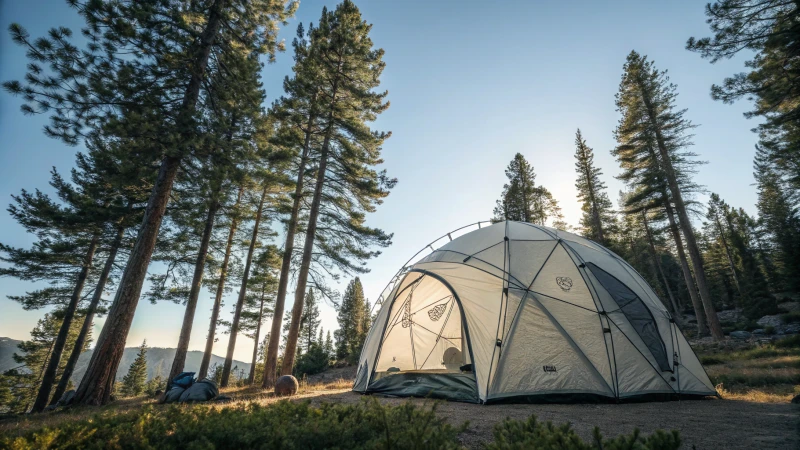
The Aerodynamic Advantage
Camping in unpredictable weather can test any tent’s limits, but dome tents shine here. I remember setting one up on a breezy day, and it was like magic seeing how the wind just swept over it. The secret? Their aerodynamic1 shape. The curved surfaces act like a shield, letting the wind glide over without creating pressure points that could collapse it.
Intersecting Pole Structure
The crisscrossing poles are a hallmark of dome tents, offering more than just aesthetic appeal. Picture this: Two or more poles, flexible and strong, intersect at the peak and stretch out to anchor at each corner. It’s this design that evenly spreads out the forces acting on the tent, making it resilient against gusty winds.
Materials and Flexibility
Ever noticed how a tree sways but rarely breaks in a storm? Dome tents borrow this concept. Using materials like fiberglass or aluminum poles, they sway with the wind instead of standing rigid. This flexibility2 reduces the chance of structural damage, keeping your temporary home safe during those unexpected gusts.
| Tent Type | Pole Material | Wind Resistance |
|---|---|---|
| Dome | Fiberglass/Aluminum | Moderate |
| Geodesic | Aluminum | High |
| Cabin | Steel | Low |
Enhancing Stability for Extreme Conditions
For those nights when the weather really decides to put on a show, I’ve learned a few tricks to bolster a dome tent’s stability. Adding extra guylines and stakes can make a world of difference. Some tents even come with handy vestibules that help cut down on wind impact.
Comparing to Other Tent Designs
In my years of camping, I’ve tried everything from geodesic to cabin tents. While geodesic models are unbeatable in harsh climates, I find dome tents strike the perfect balance for most trips—easy to carry and set up, with just enough resistance to handle surprises from Mother Nature. Compared to cabin tents3, which offer roominess but less wind protection, dome tents are my go-to for most adventures.
Understanding these features has helped me pick the right tent for every adventure, ensuring not just comfort but also safety, no matter where I pitch it.
Dome tents have an aerodynamic design for wind resistance.True
The curved surfaces allow wind to flow smoothly, reducing pressure points.
Cabin tents are more stable than dome tents in high winds.False
Cabin tents offer more space but less stability in windy environments.
Are Dome Tents More Portable Than Other Tent Types?
Ever had a camping trip ruined by a bulky tent that was hard to carry? I have, and it made me rethink my gear choices.
Dome tents are typically more portable than other tents because they use lightweight materials and pack compactly, making them perfect for backpacking and casual camping trips.
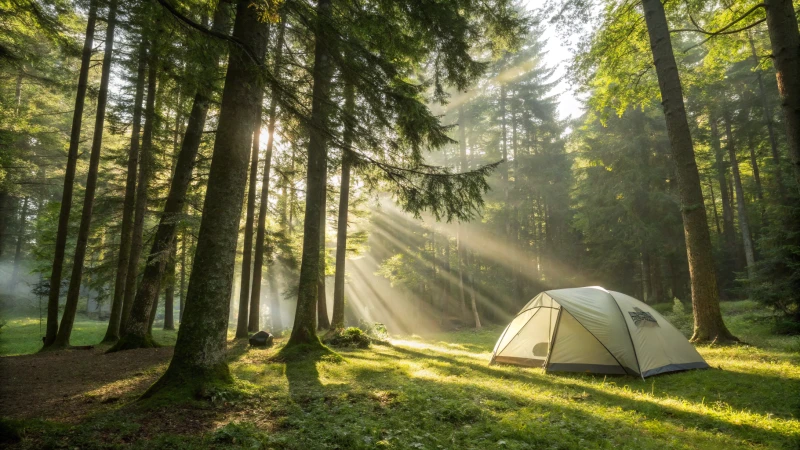
Understanding Portability in Tents
Imagine this: you’re hiking up a scenic trail, and all you can think about is the heavy load on your back. That’s when portability becomes your best friend. In my quest for the perfect tent, I’ve found that dome tents often steal the show with their lightweight build and quick setup. They’re like the reliable sidekick every camper needs.
Comparison with A-Frame Tents
Let me take you back to a trip where I tried an A-frame tent. Sure, it was light, but every time I sat up, I felt like a giant in a tiny house. Dome tents, with their spacious interiors, offer a much better alternative for those who don’t want to feel boxed in.
| Feature | Dome Tent | A-Frame Tent |
|---|---|---|
| Portability | Lightweight and compact | Lightweight |
| Setup | Quick and easy | Simple but manual |
| Interior Space | Spacious center, tight edges | Cramped edges |
Cabin Tents: Spacious but Bulky
I’ve always loved the idea of a cabin tent for family trips. They’re like little homes away from home! But, oh boy, the weight! Getting one of these set up feels like an event in itself. If you’re planning on moving camp frequently, dome tents might save you a lot of hassle.
Geodesic Tents: Stability Over Portability
For those adventure seekers out there, geodesic tents are great. They were my go-to when I camped in high-wind areas. But they are not what I’d call "easy on the back." These tents are designed for stability over easy transport, unlike their dome cousins.
The Convenience of Pop-Up Tents
Pop-up tents are what I call the "grab-and-go" option. They’re as easy as tossing them on the ground and watching them unfold—perfect for casual trips. But if a storm rolls in, you might wish you’d brought something sturdier.
For more on dome tents’ advantages4 over other types, consider how their design enhances both portability and ease of use.
Exploring Use Cases
Dome tents have been my trusty companion on various camping escapades—from solo backpacking adventures to fun family weekends. Their versatility makes them a fantastic choice for almost any camping scenario. Thinking about your specific camping needs can help you decide if a dome tent is your perfect match.
Check out these camping tips5 to make the most of your outdoor experience with a dome tent.
By weighing the pros and cons of different tent styles based on portability, you can pick one that fits your unique camping style and needs just right.
Dome tents are lighter than cabin tents.True
Dome tents use lightweight materials, making them easier to carry than bulkier cabin tents.
A-frame tents offer more interior space than dome tents.False
Dome tents have a curved design providing more headroom and space than A-frame tents.
What Weather Conditions Are Dome Tents Best Suited For?
I remember my first camping trip with a dome tent—it was like discovering a new world of comfort under the stars. But what weather conditions are these tents truly made for?
Dome tents are ideal for moderate weather. Their aerodynamic shape provides stability in wind and effective rain protection, though they fall short in extreme cold or heavy snow without additional support.
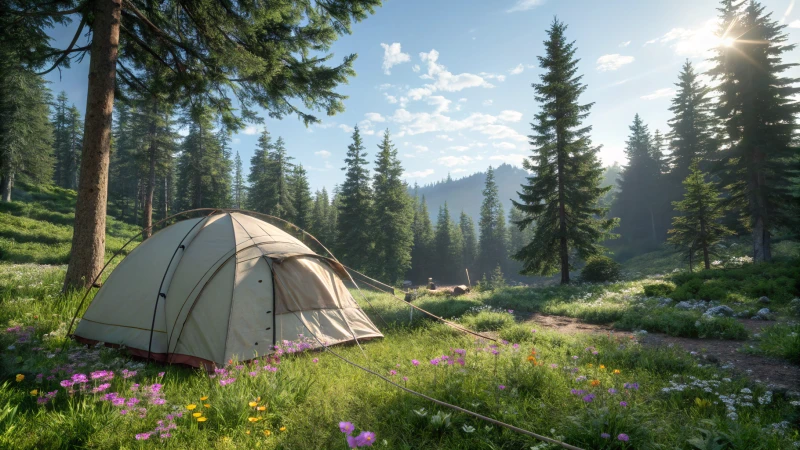
Understanding Dome Tent Design and Weather Suitability
When I first set up a dome tent, I marveled at its unique design. The intersecting flexible poles create a sturdy, aerodynamic structure that stands firm even when the wind decides to join the party. This stability makes dome tents my go-to choice for those trips when the weather seems as unpredictable as my old college roommate.
Handling Rain and Wind
Picture this: a sudden downpour hits while you’re enjoying the great outdoors. With a dome tent, rain is more of an inconvenience than a showstopper. Its curved shape ensures water slides off easily, and the waterproof materials keep you dry inside. I remember one camping trip where a windy night tested my tent’s resilience, and it held up like a champ, providing a cozy haven amidst the chaos.
| Weather Condition | Dome Tent Suitability |
|---|---|
| Light Rain | Highly Suitable |
| Heavy Rain | Suitable |
| Mild Wind | Highly Suitable |
| Strong Wind | Suitable |
Limitations in Extreme Conditions
Even with all its perks, a dome tent isn’t the knight in shining armor for all weather conditions. During one winter expedition, I realized that heavy snow and biting cold weren’t its strong suits. For those conditions, a geodesic tent6 is more reliable, offering the extra support needed to brave such extremes.
Heat and Cold
On a hot summer night, I found the ventilation in a dome tent to be a lifesaver, maintaining a comfortable atmosphere inside. However, when temperatures plummet, these tents can feel like standing on thin ice unless you bring along some additional insulation.
| Weather Condition | Dome Tent Suitability |
|---|---|
| Hot and Humid | Suitable |
| Cold | Less Suitable |
| Snow | Less Suitable |
Explore more about why dome tents make excellent companions for casual camping trips by considering their benefits across various climates. Their ease of setup and transportability further enhance their appeal for adventures in mild to moderate conditions. For those eager to tackle more challenging environments, comparing different tent types can illuminate the best option for your next escapade.
Dome tents are ideal for heavy snow conditions.False
Dome tents are less suitable for heavy snow due to limited support.
Dome tents offer excellent stability in moderate wind.True
The aerodynamic design of dome tents provides stability in windy weather.
Why Choose a Dome Tent for Casual Camping?
Ever stared at a sky full of stars and thought about setting up camp right beneath them? Let me tell you why a dome tent could be your best pick.
Dome tents are the go-to choice for casual camping because they’re easy to set up, lightweight, and stable in moderate weather. Their curved shape maximizes interior space, making them perfect for various outdoor adventures.
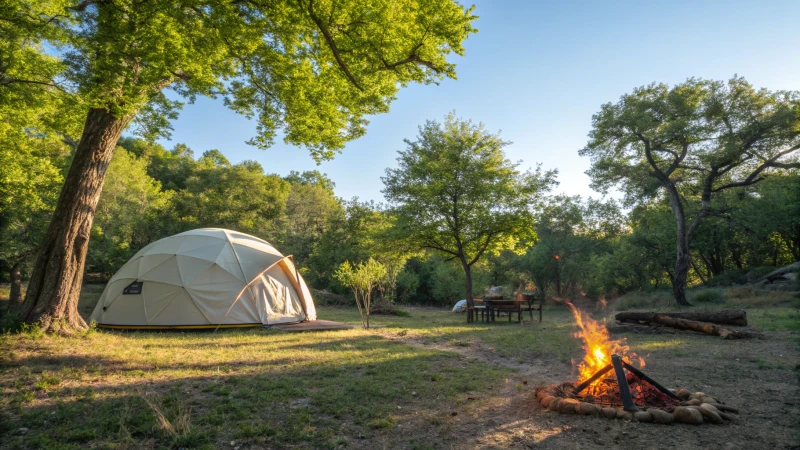
Key Features of Dome Tents
When I first ventured into camping, the maze of tent options was overwhelming. But then, I discovered dome tents, and it felt like finding the perfect travel companion. Imagine this: two or more flexible poles intersecting to create a structure that’s both robust and wind-resistant. This design isn’t just about looks—it’s about standing strong against the elements, which is exactly what you need when a gentle breeze turns into an unexpected gust.
Ease of Setup
Setting up a dome tent is like a breeze compared to other options. I remember my first time; it was so intuitive that it almost felt like the tent wanted to set itself up. With fewer poles and a straightforward design, even novice campers7 like me could get it up and ready in no time. This ease is a lifesaver, especially for those spontaneous trips where planning ahead isn’t part of the adventure.
Portability and Space Efficiency
Dome tents are like the Swiss Army knife of camping gear—they’re compact yet pack a punch. They’re incredibly lightweight and don’t take up much space in your trunk or backpack. Despite this, they offer ample interior space with a peak height that feels like a small slice of home in the wilderness. Whether it’s backpacking through rugged trails8 or just a quick weekend getaway, this tent has been my trusty sidekick.
| Feature | Dome Tent |
|---|---|
| Shape | Curved, dome-shaped |
| Setup | Quick and easy |
| Portability | Lightweight |
| Stability | Moderate wind |
| Interior Space | Spacious center |
Versatility Across Conditions
While I’ve loved how dome tents handle typical camping weather, I’ve learned they’re not just fair-weather friends. They adapt well across different environments—from cozy beachside campsites to tranquil forest retreats. However, if the weather decides to throw a tantrum, some extra reinforcement might be needed. But for most trips, this tent has been my reliable shelter.
Understanding these features ensures that your choice of a dome tent aligns with your needs, offering comfort and security for any adventure you embark on.
Dome tents are difficult to set up for novices.False
Dome tents are known for their simple and quick setup, ideal for beginners.
Dome tents offer spacious interiors despite being compact.True
Their design provides ample interior space with a central peak height.
Conclusion
Dome tents are lightweight, easy to set up, and stable in moderate weather, making them ideal for casual camping. They offer good interior space but require reinforcement in extreme conditions.
-
Learn about how dome tents’ aerodynamic shapes contribute to stability by reducing wind resistance. ↩
-
Discover why flexible materials in dome tents help absorb wind forces, preventing structural damage. ↩
-
Explore why cabin tents may offer less stability compared to dome tents in windy conditions. ↩
-
This link provides a deeper understanding of why dome tents might be a better choice for certain camping situations. ↩
-
Explore essential tips to enhance your camping experience with dome tents, ensuring comfort and convenience. ↩
-
Discover how geodesic tents withstand harsh weather with advanced structural design. ↩
-
Learn step-by-step instructions for setting up a dome tent easily and efficiently. ↩
-
Explore why lightweight camping gear like dome tents can enhance your outdoor experience. ↩



